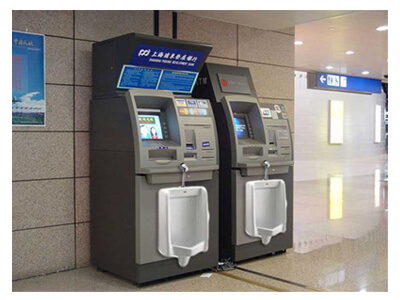So far, we have mostly considered stand-alone PC systems, configured for data acquisition tasks. Many equipment manufacturers require data acquisition and analysis functions in their end products. One approach, becoming increasingly popular, is to use an industrial embedded pc as a major component of the product. Depending on the manufacturer's requirements, the PC may still function as a general-purpose computer and run most commercial software packages. On the other hand, it can be completely dedicated to the tasks required by the overall product it is part of, and be unable to run any general-purpose software. In this case, the embedded PC may not even have a floppy disk drive or any standard peripherals. It could run programs from ROM or Flash memory, configured to look like a disk drive to DOS or Windows.
 There are many advantages to using an embedded PC in a commercial product, especially for data acquisition, analysis, and storage functions. A huge number of commercial hardware and software products are available, minimizing in-house development costs as well as a new product's time to market. Compared to other industrial computer architectures, PCs and their support products are less expensive, are more readily available, and offer more "user-friendly" development tools.
There are many advantages to using an embedded PC in a commercial product, especially for data acquisition, analysis, and storage functions. A huge number of commercial hardware and software products are available, minimizing in-house development costs as well as a new product's time to market. Compared to other industrial computer architectures, PCs and their support products are less expensive, are more readily available, and offer more "user-friendly" development tools.
This also applies to industrial and embedded PCs. This trend toward using embedded PCs is reflected by the increase in the number of products for this market. Many manufacturers now produce miniaturized PCs, based on a single board, designed to fit within a product using a minimum volume, such as the Compact PCI standard. These products can support standard PC peripherals, such as disk drives and displays, yet will work without them for a scaled-down version in the final product. Software development for products using these embedded PCs can be carried out on a standard desktop PC or the target system itself.
If an embedded PC is technically adequate for performing the required task and its cost can be justified, it is often a good choice, especially compared to other dedicated computer systems. If a PC would be grossly underutilized in an application or the product is very cost-sensitive, a dedicated CPU or a microcontroller board is a better alternative. One compromise is designing a board using a microcontroller that emulates a PC (sometimes referred to as a "PC-on-a-chip"), This approach keeps hardware costs down while allowing you to use PC software products.
One application where embedded PCs are very popular is in network-based products. As more commercial instruments and even appliances use networking features (for using both LANs and the Internet), small embedded PCs become an important part of these products. Many single-board computers (in ISA, PCI, or PC-104 form-factors) contain an Ethernet interface (usually lOBase-T or 100BASE-T) and have enough memory (DRAM) to run a standard operating system (such as MS-DOS, Microsoft Windows, or Linux). Network software can be added to the embedded PC as a separate package (as when running DOS), or it may already be part of the operating system (as in Windows 95 and above). The embedded PC can then connect to other PCs on the same network (via a LAN) or even to Internet sites.
When selecting network software to use, look carefully at the application. If the embedded PC must connect to a large, server-based LAN or to the Internet, it should use the TCP/IP protocol. However, if it will only connect to one or just a few other PCs through a simple Ethernet hub, you should consider Microsoft's NetBEUI protocol, which was part of Microsoft Windows for Workgroups (Windows 3.11) and is still supported in Windows 95/98.
Networked data acquisition equipment is particularly useful in an industrial environment. You can employ many small PCs (with data acquisition interfaces) to monitor and control various manufacturing processes. These PCs (or PC-based instruments) would be connected to a central computer, running appropriate software (such as LABTECH CONTROL) that oversees the entire process. You can even use embedded data acquisition PCs at remote sites and use the Internet for communications.
For more information about industrial embedded PC, please visit Jawest product lines.